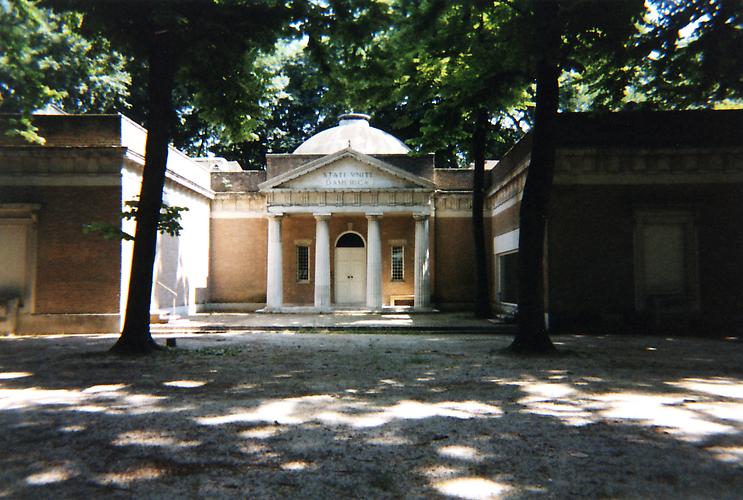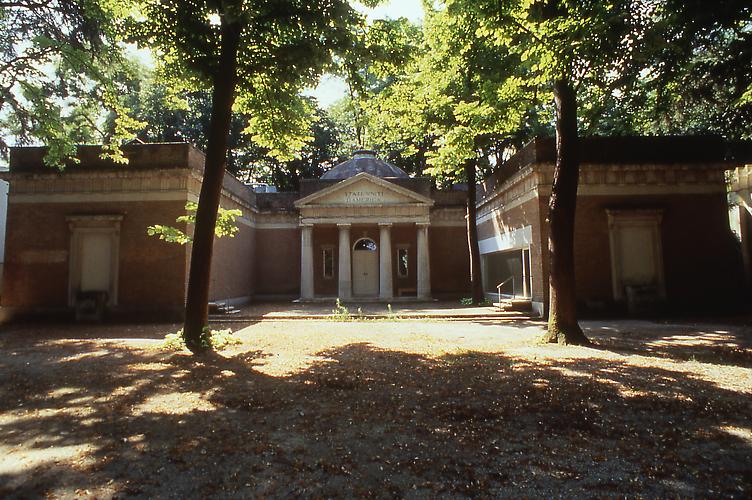The U.S. Pavilion is a Palladian-style structure built in 1930 by architects William Adams Delano and Chester Holmes Aldrich. Within the Castello Gardens that house all the national pavilions of the International Art Exhibition – la Biennale di Venezia, the U.S. Pavilion enjoys a prominent position. The building consists of four galleries;
its floor plan includes two wings branching off from an entry rotunda, which encloses a central plaza.
In 1986, the Solomon R. Guggenheim Foundation purchased the
U.S. Pavilion from the Museum of Modern Art, New York, with funds
provided by the Peggy Guggenheim Collection Advisory Board. Since 1986, the Peggy Guggenheim Collection has worked with the United States Information Agency (USIA), the U.S. Department of State, and the Fund for Artists at International Festivals and Exhibitions in the organization of the visual arts exhibitions at the U.S. Pavilion, while the Solomon R. Guggenheim Foundation has organized the comparable shows at the Architecture Biennales. In 2002, the U.S. Pavilion at
the Architecture Biennale was promoted for the first time by the
U.S. Department of State.


